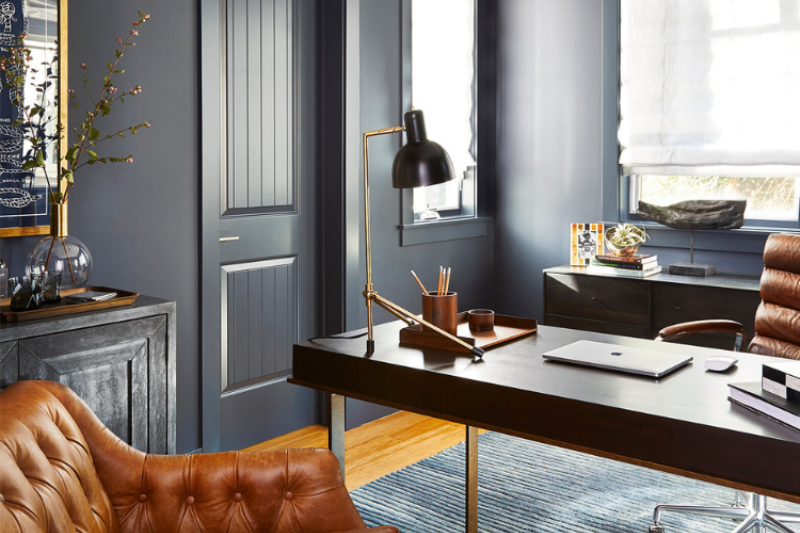How Long Does it Take to Build a New Home in the Bay Area?
You know that building a new home doesn’t happen overnight, but how long does it really take? If you have been following along with my recent posts on the ins and outs of planning and hiring for a new build, you’ll know that the answer isn’t a simple one.
However, to help you understand what to realistically expect, I have two tips for you:
Plan for at least a 2-year process, including design time, permits, and building. It is always better to prepare for longer than you think, especially if you have to rent a place to live in the meantime. If it gets done earlier, yay!
Know what factors impact your timeline and which you can directly influence. Expectations are everything, especially when it comes down to what you can and can’t control.
Today, I’m sharing 7 factors that influence the length of your new build process, along with my tips for making the most of each. Read on…
7 Factors that Influence the Timeline of Your New Build
Note: If we work together, we will discuss anticipated timelines and project phases in our preliminary meetings. We will continuously touch base and update timelines as the project progresses. This is yet another reason to enlist a professional for your design project — for clarity, being able to anticipate what is coming, and coordination amongst trades.
#1. Design Time
When working with an architect and interior designer on your project, there is often a general timeline or schedule that you agree to, but this can certainly change. For new construction, the design process can take anywhere from many months to a year or more, including city reviews (see #3) and addressing comments and public hearings as needed before your project is approved.
Remember, too… just because you have a floor plan and the exterior designed, does not mean you are necessarily ready to go. You still have to get several engineers involved to design structure, energy (Title 24 in California), soil, etc. There could be some back and forth between designers and engineers that account for time, too. Here is a comprehensive overview of everyone involved in the design and planning process.
#2. Speed of Decision-Making
A home is a complex structure. The number of decisions to be made when designing and building a custom home is in the hundreds, and each of those decisions impacts other elements in the home. While it is important for you to feel confident in your choices, just know that the more iterations or revisions you request during the design phase, the longer the process will take.
That said, I would definitely argue in favor of a design process that involves changes, rather than a construction project that involves changes. As you’ll see in #6, changes during the construction phase can rack up more serious expenses and delays than if you spend the extra time to plan properly upfront.
Tip: Your interior designer and architect have extensive knowledge about home design. They will help you address the decisions that need to be made, in addition to guiding you toward the ones that are right for your desired outcome and lifestyle.
Windows and doors are just one of the major decisions that need to be made when designing a new home.
#3. City Permits
Once you submit your custom home’s plans to the city for approval, the response time from the city can vary drastically. This is the part of the process that you have no control over, except to ensure that all of your documents have been thoroughly prepared. You can ask your architect what his/her typical wait time has been in the past to set some general expectations, but prepare to wait anywhere from weeks to months.
#4. Inclement Weather Conditions
Bay Area weather is great most of the time, but even so, timing construction so that you don’t start during the winter rainy months is important. You can’t pour concrete when it’s raining, and cold or wet weather can also affect the drying time and performance of many materials used in building your home, including paint. I suggest at least getting your house framed and waterproofed with a roof before the rainy season begins.
#5. Available Cash Flow
If you’re planning to build a home, you have probably already considered the financial investment and how you will get those funds. However, to avoid setbacks, you should take that next step and have your funds and financial situation ready to go before your project begins.
If you have a house to sell, stocks to sell, or a loan to take out, be sure to have all of that prepared. You don’t want to stop a project partway through because you do not have the funds available to keep it going. This is very inefficient and potentially more damaging than it seems…
First, a half-built home sitting neglected on your lot can accrue damages from weather and neglect.
Second, contractors are on a timeline. They are really busy in the Bay Area, and they often have multiple projects lined up. If they move their team off of your project onto another, you may have a challenging time getting them back on your project and on your schedule.
Final tip to keep your project running smoothly — always budget for more than you think you’ll need, including the final furnishing and decorating that make your house feel like home!
Features like this wet bar need plumbing and must be planned in advance and approved.
#6. Changes During Construction
There are ALWAYS going to be changes or issues that arise on any construction project, large or small. With the proper designing and planning up front, as I mentioned in #1, they should not be significant. However, it is important to mentally prepare yourself that things can happen. It may be something that the builder brings to your attention, or it might be something you didn’t think of and now you want to change or add.
Either way, if you’re submitting a change order, you can expect it to impact your project’s duration and its budget… usually in the direction of more.
#7. Level of Preparedness
When you are in the middle of a project and your builder is asking you for the entire house’s plumbing fixture selection, you better have it ordered, delivered, and ready when they are! Lack of materials will pause your project faster than you can blink. For contractors, time is money. When they are not moving a project forward, they are not getting paid. If you are not ready with your materials and fixtures, like in #5, they are going to work on another job and you will need to wait for them to get back to your project.
Unfortunately, this situation usually sends homeowners scrambling over to big box retailers (*gasp!*) to buy faucets and toilets at the last minute to save their timeline. The result? You guessed it — making bad design decisions that you have to live with in your home long into the future.
All of this can be avoided by planning well in advance (#1), staying on top of ordering, or working with a professional interior designer who has knowledge of the design and build process and can anticipate what will be needed and when.
The interior furnishings and decor are what makes your new build a home. Don’t forget to account for the budget and time it takes.
Extra Tip: Furnishing Your Home
The final step in preparing your custom new build for everyday living is furnishing and decorating. I have seen so many people build their beautiful, new homes only to move in with old furniture they don’t love, or worse, live without furniture for an extended period of time. Instead, you can budget and plan for your furnishings in advance, so that your rooms are furnished at the same time, or shortly after, construction finishes, making the move in a real joy!
The process of creating your interior design plan takes us about 4-5 months for an entire home, and it will take another few months for us to order, track, inspect, receive, and install your furnishings, although lead times for furniture can be even longer. It’s better to wait for furniture while still under construction than after you’ve moved in. This means starting the furniture and decor phase at least 6 months prior to when construction is expected to wrap up. Note: This is separate from the hard finishes phase (e.g. flooring, cabinetry, tile, etc.), which should happen during the architectural design phase.
Final Thoughts
Now you know all of the most important factors that influence your timeline, from the initial design to the final piece of furniture getting installed in your new custom home. I know it is a lot to take in all at once, but with the right knowledge, expectations, and team members, you will have peace of mind that your home will be completed efficiently and beautifully, and ready for you to move in!
If you have any questions or want to chat, click here to learn more about how I can help you with your home, or schedule a call to talk about your project here. I can’t wait to help you design and build your dream home!
Talk soon!
Rosanna








